Peas are nutritious, easy to prepare, and easy to serve to BLW babies! Here is everything you need to know about safely servings peas for baby led weaning.
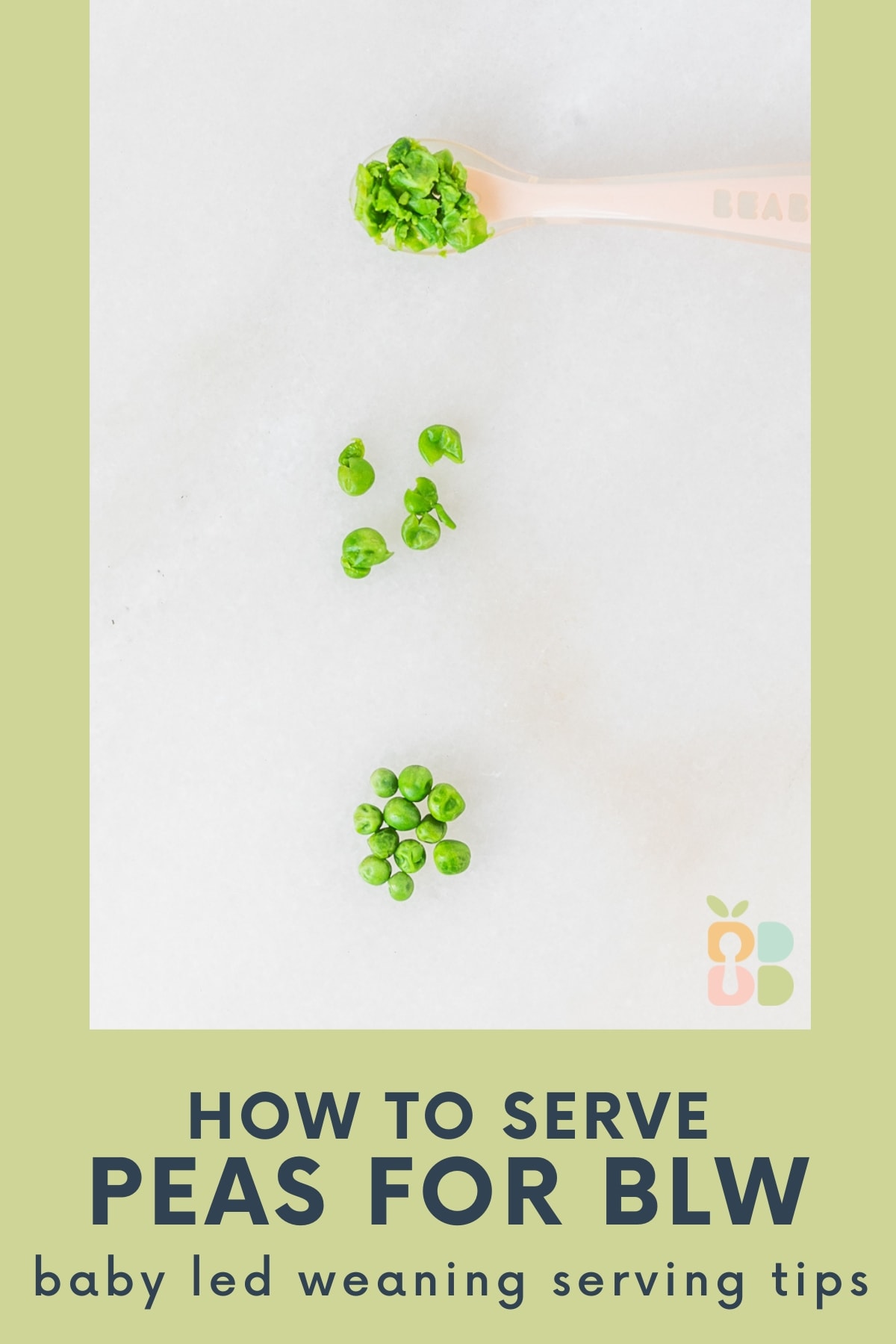
Peas are a food I always keep stocked in the freezer. From the earliest ages up through toddlerhood and beyond, peas are so easy to heat and add to a plate when I feel the need to add something green to my kids' meals. I am never without a Costco-sized bag!
Green peas, also called garden peas, are part of the legume family, and while they are available fresh for a short period each year, they are widely available (and affordable!) in the freezer section year-round, making them an excellent, easy addition to your family's meals. Because peas are so easy and nutritious, you'll definitely want to add them to baby's meals when starting solids. Here is what you need to know about serving peas to babies using a baby led weaning approach, including how to prepare peas, how to safely serve them, and recipe ideas.
Jump to:
When Can Babies Have Peas?
Babies can have peas as soon as they are developmentally ready for solids, usually around 6 months. Because peas are small and round, they could pose a choking risk, so there are precautions you should take when serving them in a BLW style. However, they are so affordable and easy to prepare, so don't shy away!
Baby Health Benefits
Green peas, which are legumes (as are beans, soybeans, lentils, and peanuts), are very nutrient-dense. Peas are a good source of1:
- Fiber - good for baby's digestion
- Protein - one of the best vegetable sources of protein!
- Folate - necessary for proper growth and development (along with iron and zinc!)
- Iron
- Zinc
- Vitamin K - for healthy blood and bones
- B vitamins - necessary for energy production and creating new blood cells
- Antioxidants - Could help combat inflammation and fight chronic disease
While peas do contain some antinutrients2 (naturally occurring compounds found in foods that may interfere with mineral absorption and digestion) such as phytic acid and lectins, I wouldn't be too concerned, since it is likely that baby won't eat enough to have an effect. You can avoid any issues by ensuring peas are completely cooked and that baby doesn't eat too many peas at once. A varied diet is always best!
How To Prepare Peas for Baby
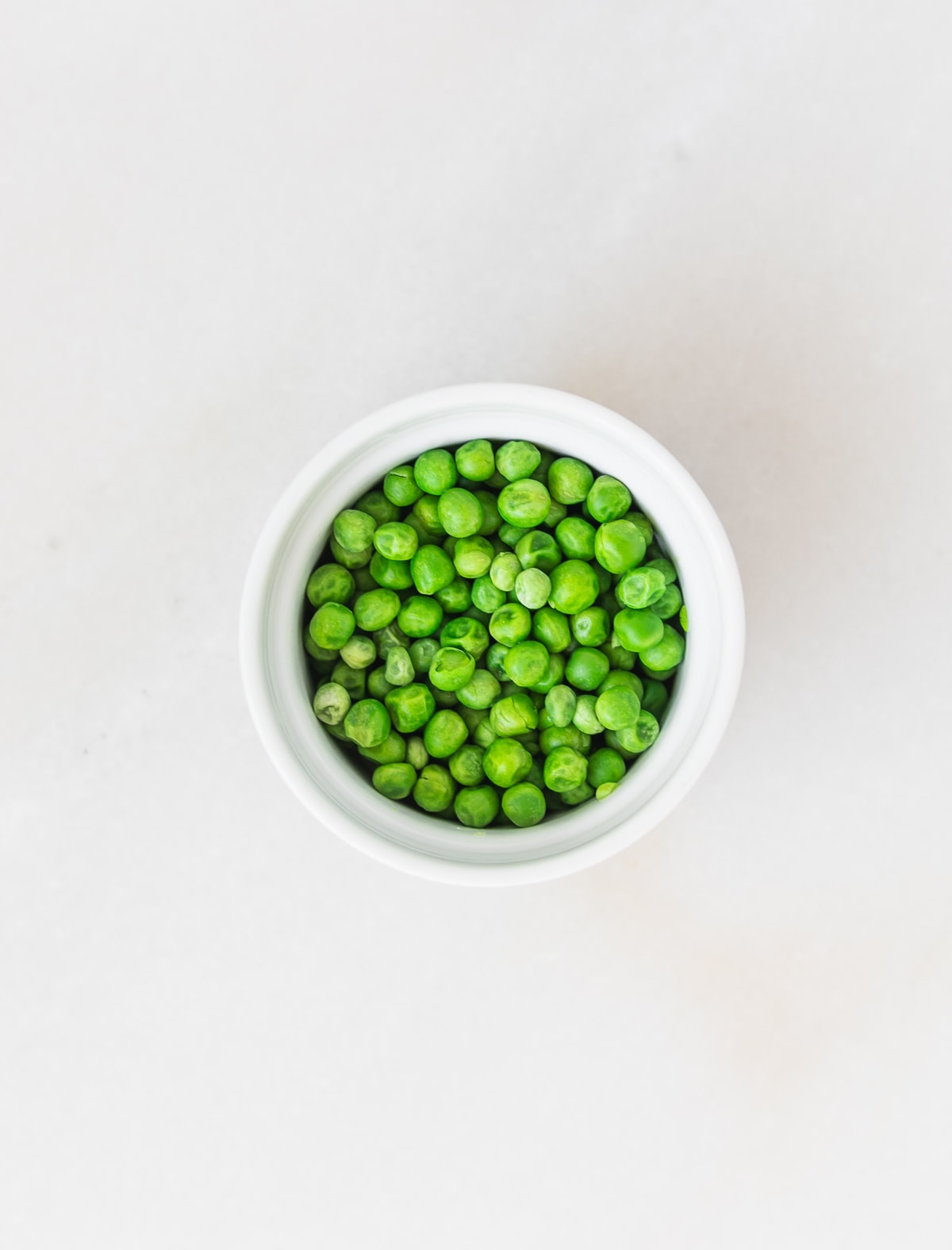
Make sure to fully cook peas, even from frozen. Making sure peas are properly cooked can decrease antinutrients (discussed above), ensures a soft texture, and can decrease the risk of foodborne illness. While unlikely because of peas, frozen vegetables have been recalled in recent years due to contamination with foodborne illness causing bacteria. To be safe, make sure peas briefly reach boiling temperature during cooking (and then let them cool to a safe temperature for baby).
Some easy cooking methods include:
- Steaming - Steam in a steamer basket 2-4 minutes.
- Boiling - Cover with water and boil 3-5 minutes.
- Microwaving -Cover with water in a glass dish and microwave 2-3 minutes. To be honest, this is the method I use the most!
- Adding to soups, stews and other mixed dishes.
How To Serve Peas for Baby Led Weaning
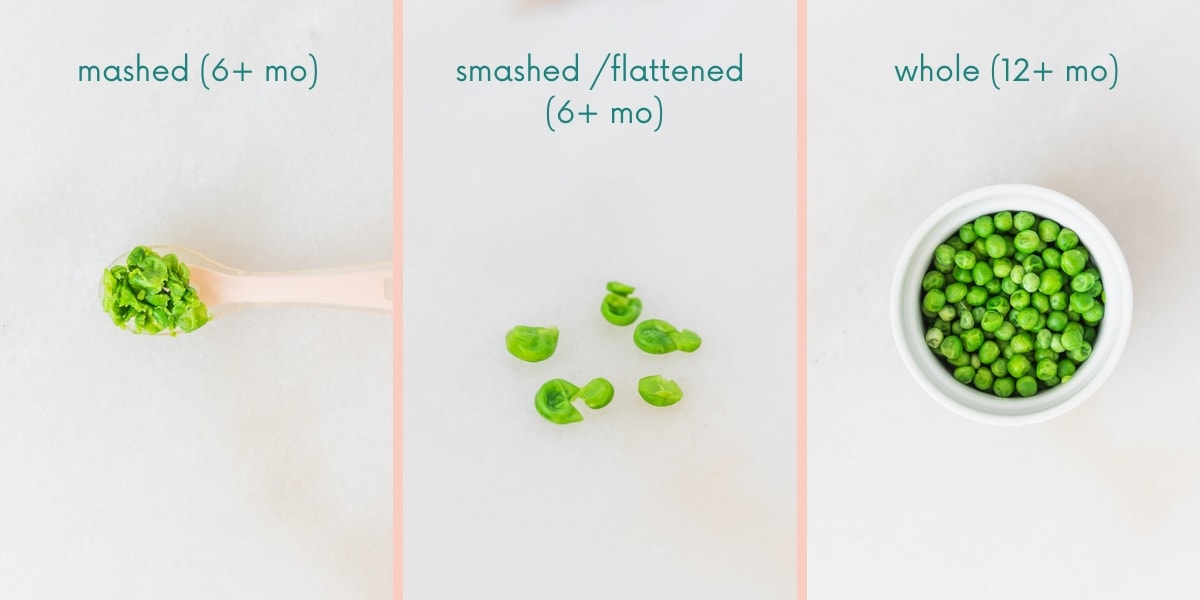
Since peas are small and round, they can be a choking risk for little ones under 12 months. For babies 6-12 months, you'll need to either mash or flatten peas to eliminate the round shape.
1. Mashed (6+ months)
Mash cooked peas into a paste. You can serve mashed peas in a preloaded soft spoon, on a rimmed plate or bowl for scooping with hands, or spread on toast fingers.
2. Smashed or flattened (6+ months)
Before 1 year of age, flatten cooked peas so that they are no longer round. Younger babies who do not yet have a pincer grasp will find these peas harder to pick up, but they can still try to rake or scoop them up. Once baby develops a pincer grasp using the index finger and thumb (around 9-10 months), it will be easier to pick up individual peas.
3. Whole (12+ months)
Around 12 months, or once you feel comfortable, you can start to offer peas whole. I suggest giving only a small amount at a time to avoid overstuffing too many in the mouth at once!
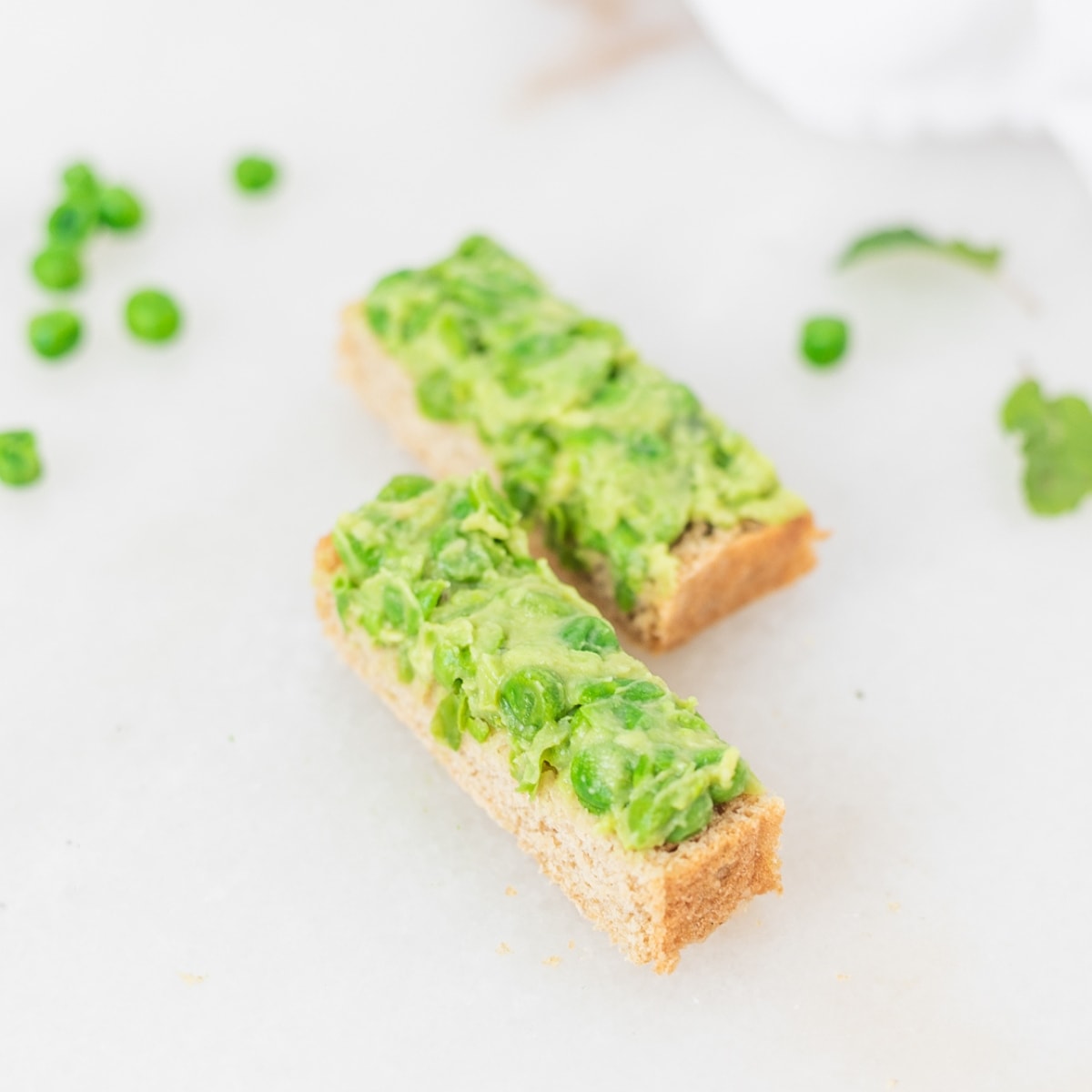
BLW Friendly Pea Recipes
Try one of these recipes that include peas for your little one to experience! If peas are in a mixed dish, make sure you mash or flatten them before serving to babies younger than 12 months.
- Easy Pea Avocado Mash
- Pea Pesto by My Kids Lick The Bowl
- Pea Fritters by Healthy Little Foodies
- Pasta with Peas by Feel Good Foodie
- Green Pea Hummus by Baby FoodE
- Family Friendly Prawn and Pea Risotto by Mummy Cooks
- Kid Friendly Ginger Peas by Fearless Dining
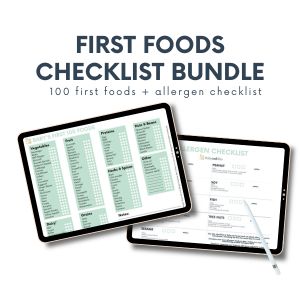
Track your baby's journey through starting solids! Get my 100 First Foods Checklist and Allergen Checklist Bundle today!
FAQ
Frozen peas can be a choking hazard because they are small, round, and firm. Be sure to cook peas and mash or flatten them for babies under 12 months of age.
No, peas are not a common allergen, though it is possible to be allergic to peas. Pea allergy may be more common in those with allergic reactions to other legumes. Peas and pea products can also be a trigger for FPIES.
If you can't find frozen, canned peas are just fine! Look for low sodium or no added salt peas, or drain and rinse them before cooking.
Yes. Though unlikely for peas, there have been outbreaks of foodborne illness from frozen vegetables. Freezing will not kill bacteria, but cooking will. Because babies don't yet have a robust immune system, it is best to cook peas to boiling before serving to little ones.
I typically advise avoiding protein isolates, such as pea protein. Pea protein milk is fine as a milk substitute for those with dairy allergies, but should only be used for cooking and food preparation (such as cooking oatmeal) and should not be given as a beverage before 12 months.



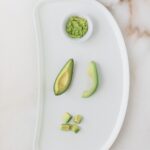
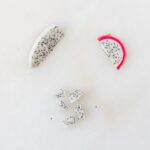


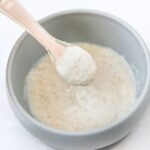



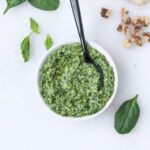

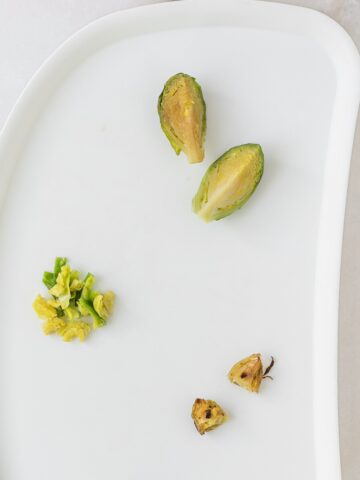
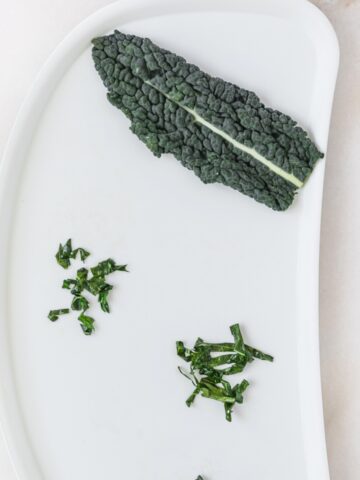

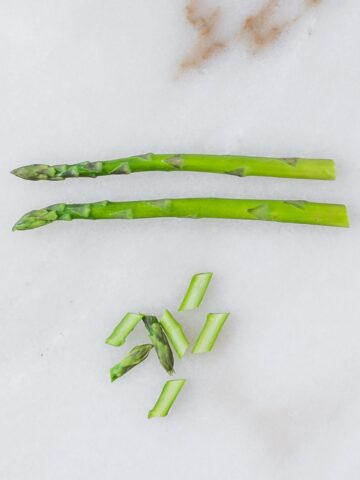
Leave a Reply